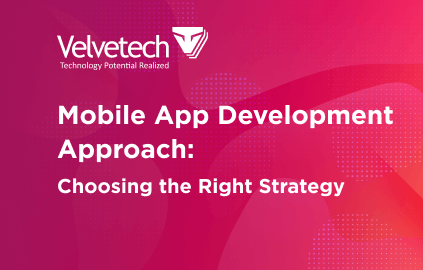Apps for fitness and sports are on the rise in today’s mobile market. The importance of these apps can be seen by the way they support our health. Everyone seems to be concerned about health-related fitness and is ready to spend for it. Fitness apps help us become more health-conscious. This is the reason for its global market growth.
The global fitness app market has the potential to grow by USD 3.5 billion during 2021-2025.
Source: Technavio
Most people love to use fitness apps because they raise the bar when it comes to the user’s standard of wellness.
With some special features, these apps can provide users with the ability to control and manage gym equipment, recommend the best diets, enhance exercise plans, and also track personal fitness activity among other things. They provide health recommendations and help the user to gather additional information for health assessments like steps and distance covered, number of calories consumed or burnt and so on.
Despite the fact that fitness apps are soaring, there is more room for success. However, app owners ponder how to create a fitness app that would meet the user’s requirements. The App Store and Google Play are already saturated with fitness and sports apps. Thus, users are finding it difficult to make a choice.
In this article, we will be looking at common types of fitness apps and some ideas on how to make a fitness app unique and top-ranked. The main focus will be the fascinating features that make fitness apps desirable and make users download them.
Choosing a Winning App Development Strategy
Watch our webinar to uncover effective mobile development approaches and launch your app.
Types of Fitness Apps

Managing Gym Equipment
This type of app helps the users have a well-fine-tuned workout experience in the gym. The process involves synchronizing the gym equipment such as a treadmill with the individual preferences of a user via IoT. The result is a customized workout and a unique experience.
Learn a Case Study: Running Studio Automation
Gym equipment management apps can literally work for any fitness equipment by the use of IoT technology. The app functions by loading up the user’s data in the settings of gym equipment automatically just before the fitness session starts. The app also harvests all statistical data of the user during the session and sends it to a server.
Home Workout Apps
The concept of home workout apps is a convenient solution for individuals that live too far from a gym, don’t have the desire or enough time to go to a sports center or join a group fitness class.
The aim of workout apps is to provide a set of routine exercises. With their help, users can create or adopt new training plans. Additionally, the apps can be in sync with fitness trackers and provide personalized health recommendations for a user.
If your goal is to create your own workout app, then you should know what lies in its essence. The main focus here is the app’s ease of use. Workouts are classed according to types such as strength, endurance, and mobility. There are also other filters like duration, level, intensity, and equipment. This makes it easy for users to search for what they desire. Training plans can be based on user needs and can also be changed or adapted for different goals.
Fitness Trainer and Yoga Class Finder
The purpose of this app is to allow the users to choose a training coach or find some fitness instruction class like yoga lessons. The user highlights their goals and then picks a trainer or instructor who matches his or her requirements.
Every trainer has a portfolio of personal programs developed solely based on the goals and objectives of past users and the feedback that they provided. There is also room for messaging and video calls to enable users and trainers to communicate effectively.
Ususally, you build a fitness app that works alongside a fitness tracker. This is to let users monitor their progress and share it with the trainers. Choosing fitness classes by users is facilitated by a user’s choice of training duration, instructor, style, difficulty, and intensity. There are also community features in the app that allow users to contact each other and leave comments or recommendations about a trainer or yoga session.
Nutrition and Diet Apps
You are what you eat! Could this be the reason why nutrition and diet apps are trendy?
26 percent of 18- to 29-year-olds use apps to track nutrition regularly, while 23 percent in the same age category use them occasionally.
Source: Statista
Besides tracking calories consumed and burnt this type of app also controls the balance of water.
Nutrition and diet apps help users to lose, gain, or have a constant weight by a special diet plan. The users can track their eating habits through a food logging feature.
Users are motivated by progress reports and success tips. From an information log, calories can be calculated based on the number consumed during meals or burnt during exercises.
Fitness Activity Tracking Apps
The goal of fitness tracking apps is to collect data about the user’s activities. These include the number of steps taken, stairs climbed, distance ran, and other fitness metrics. To make it easy for users to monitor progress, create a fitness tracking app that will also provide calendars and charts.
The app is not only convenient for tracking progress, it motivates users. It shows them the routes they’ve run or cycled, average speed and distance covered. A good activity tracking app for fitness should cover activities like walking, running, cycling, swimming, snowboarding, and so on.
With this app, users can set the desired goals they want to reach, especially users that are training for championships as it aids training plans. Users are motivated by new records they set. Some apps also have audio cues feature that tells the time and covered distance in every fitness activity carried out.
Best Fitness Apps
It’s always a good idea to check out the competition and see what’s trending before you set out to develop your own fitness app. Here’s a list of the best fitness apps to get some inspiration.
1. My Fitness Pal
My Fitness Pal has been headlining the charts of the best fitness apps since its release. The app is a perfect calorie counter that also syncs with your favorite sports apps to track your activity and burnt calories. Whether you want to lose weight, tone up, get healthy, change habits, or start a new diet MyFitnessPal has you covered.
Key features:
- Food tracking
- Goals management
- Activity tracking
- Socialize with like-minded
- Track overall progress
2. The 7 Minute Workout
The 7 Minute Workout is a nifty little app that helps everybody who’s too busy to find time for a gym in their calendars. This fitness app features a simple UI with just three workout types: a basic workout, an abs-focused session, or a seven-minute high-intensity workout. The app’s fans love the pre-workout instructions and the ability to micro-manage the workouts’ time limits.
Key features:
- Professionally designed workouts
- Personal trainer with voice and video instructions
- Super simple to use custom workout builder so you can build your own workouts
- Integration with Apple Health and Google Fit
- 100% Free. No hidden and surprise charges.
3. Charity Miles
Charity Miles turns the miles you run, walk, or bicycle into donations to the organization of your choice. Corporate sponsors donate a few cents for each mile the user completes, and in exchange, they get to advertise their brands in the app. Charity Miles can also help you to run pledge drives.
Key features:
- Syncs with Strava and your phone’s Health Kit
- When your friends sponsor you, they may win prizes from the app’s sponsors
- Choose a charity to support
User-Driven Approach
Watch our webinar and learn the top ways of reducing poor user satisfaction, low adoption rates, and decreased loyalty.
Must-Have Features for a Fitness App
Since you’re reading this part of the blog post, you probably wonder how to develop a fitness app that will stand out from the competition. Well, you surely don’t have to include all of the features existing out there. Moreover, it will definitely affect your fitness app development cost.
Instead, you can always start with an MVP project, gather feedback from the users, and then approach a full-fledged fitness mobile app development.
So, let’s take a look at the key features you can begin with when you’re about to build your own fitness app.
Simple Sign-up and Profile Creation

Accounts are very important because they allow app users to save and maintain their information even if they change gadgets. Make first-time users create their accounts via social media accounts. Users dislike a lengthy and complex registration process.
You can make the entire registration process short and simple. For example, a basic user profile could include name, weight, height, email id, mobile number, and a profile photo. Registration can be completed when the app sends a verification code to the provided mobile number or email.
Social Media Integration

Integration with social media goes beyond signing up. For instance, authorizing a registration through Facebook allows the application to combine social media functions. The integration also has other uses such as sharing fitness-related activities online.
Users can publish their fitness results on any social media news feed and enjoy networking with like-minded users. These can include the screenshots of routes they completed or simply post photos made while they workout.
Integration with Wearable and Non-Wearable Devices
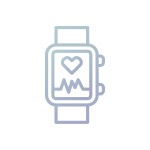
Speaking of features, synchronization with wearable devices is a must for fitness tracking apps. It is vital for fitness app development and involves integration with different external devices, both wearables and non-wearables such as smart watches, TVs, smart home devices like Amazon Echo, Alexa, or Google Home, and gym equipment as mentioned earlier.
Connection with wearable devices empowers users to keep track of their fitness activities and routine. It makes the app more user-friendly. With wearable devices, users can also keep a tab on their exercise schedule.
Smart devices can easily detect and monitor blood pressure, pulse, and other physiological factors. Furthermore, they can compare the data of their progress report by week, month, and year. Trainers can also get a lot of information about every user they train and can use such info to help people train more effectively.
Based on importance but with no particular order. Here’s a list of the most popular types of wearables that are good for integration with fitness apps:
Activity trackers – these are widely used wearables devices. They can track various activities starting from walking to swimming or cycling. They indicate what muscles are exercised and the intensity of the exercise on the muscle.
Medical monitoring devices – they can be used for monitoring sleep phases, pulse rate, and even perform electrocardiograms.
Stress trackers – for tracking stress levels. They signal users to have a break and relax when their stress levels become alarming.
Smart watches – possess some features of all the other devices talked about. Moreover, they are one of the most available for end-users and hence should be considered.
Geolocation Facility

Users walking, running or riding to keep fit should always be able to track where they are and where they have been. That is why it’s important to include this feature in your fitness application development project. It enables users to know their exact location.
With the geolocation feature, users can track routes and pathways direction when they walk, cycle, or jog.
Through the use of maps from Apple, Google, and others, the app user can plan routes, report workouts, and track their current location. Users can also share map screenshots or fitness routes on social media.
Push Notifications

Push notifications stand for the motivation the users need to reach their goals. Fitness is about consistency, therefore time and frequency are the main variables to keep in mind.
A few missed workouts or skipped meals in a diet plan can make a user not achieve a fitness goal. Ups and downs, busy schedule, bad weather, bad mood among other things can be excuses to miss training sessions or stray away from a diet plan.
Notifications are essential for fitness apps as they can motivate users to burn calories or eat a scheduled meal at a specific time.
The users can set up reminders for the workout or diet, and the push notification will effectively notify them on time. Users can also be encouraged to regularly exercise with inspirational quotes via push notification.
Video Tutorials
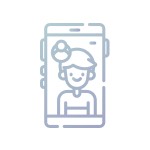
Video tutorials workout for people who want to keep fit on their own without trainers, but do not know how to go about it. The tutorials show them all the tricks in the book modeling the best way to do a specific exercise. The videos easily give vital tips regarding fitness and the impact on various parts of the body.
This helps users do it all by themselves. The variety of video workouts should be based on different levels such as beginner, intermediate, and advanced. Video tutorials can make a fitness app unique by the provision of numerous videos from a wide range of fitness, including regular workouts and well-explained yoga poses.
In-App Purchase and Safe Payment Options
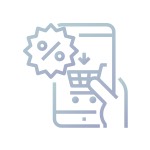
Fitness equipment, vitamin supplements, proteins, and healthy drinks can be sold to app users with ease through an in-app purchase feature. It is an in-app online store with a payment gateway integration.
The advantages of saving time, convenience, variety of fitness goods, and secure payment options makes it a sort of all in one. It includes an online store for fitness needs without having to log on to another app or website.
Barcode Scanner

A barcode scanner is another special and useful feature that enables a simple and instant process of logging in food items on a fitness app. The barcode is scanned with the aid of a smartphone and it provides all the related data like calories and ingredients.
Food Logging and Tracking
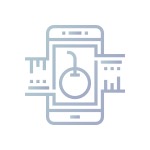
This feature is vital because a weight increase or reduction diet plan will be inaccurate without it. With this feature, food intake can be easily logged and tracked. This helps the app users in real-time track their calorie intake and follow through a diet plan successfully.
To simplify logging diet information, this feature should be side by side with a barcode. Both features make the app effective in logging the data. Additionally, it helps in organizing buying lists for grocery and even suggests healthy food recipes.
Water Tracking
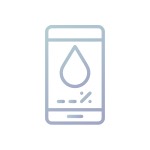
Water tracking is important as we know that we can not survive without it. Our body needs a healthy volume of water. With this feature the daily quota of 2-3 liters of water required in a day can be met.
The app contributes to the user’s fitness process and helps them achieve their goals by enabling regular water intake. The app sends reminders via push notifications to drink water and stay hydrated at different times of the day.
Nutrition and Recipe Database
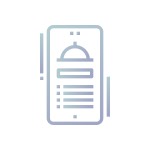
The nutrition and recipe database feature includes healthy diet recipes from various easy-to-cook meals. There is a variety of meals in HD photos, a list of ingredients, detailed preparation instructions, and nutrition information.
Users can easily get a hint of what to eat, plan a balanced diet, train effectively, and get the desired body shape faster. The recipes can be sorted to create diet plans that meet the goal of a user.
A user can customize a diet plan because there is a database that readily provides well-detailed information about diet types, classes of food and nutrients. It also has the advantage of saving the time for deciding what to eat and time spent on food preparation.
Sleep Monitoring

Another feature that surely must be incorporated in your fitness app development project is sleep monitoring. Sleep is as important part of our lives as exercising, and without proper rest, the effectiveness of daily workouts can be undermined.
Thus, tracking statistics like the overall sleep length, time spent in light, deep, or REM phases, movements, or snoring can give users essential data to improve their life quality. Time to fall asleep or wake up can also be measured and displayed to provide app users with more insights.
Additionally, there’s a smart alarm clock that you might want to implement while developing a fitness app. It helps set up the right time to wake up according to circadian rhythms and be full of energy for the next morning’s workout session.
Goal Settings
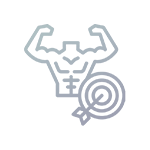
If you wonder how to make a fitness app more personalized for users, then a goal-setting feature might be an answer. Since most of us are motivated to work out in order to achieve our personal goals, it’s important for your app to provide this opportunity.
A fitness application that allows a user to choose a task, watch the progress, and complete it in a certain period of time will hardly be abandoned. This functionality can be applied not only to sports activities but also to nutrition control.
Fitness App Gamification

For the purposes of entertainment, motivation, and inspiration of the fitness app users gamification should be included. The reason is that all exercises are usually hard and require lots of effort. If a user can exchange gaming points for something realistic as a form of gratification, they tend to strive harder.
Gaming gets more interesting if users can compete and compare their accomplishments or rewards with other users. The users may even post the results on social media. Interesting tasks to be completed by users can be added for failing the objective of the game. It could be penalties like five pushups, crunches, or some other form of workouts.
Activity Log
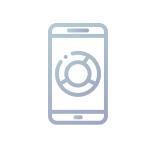
There is no use for a fitness app if you can’t log your activities. This feature helps users to plan and follow more promising and productive workout activities. Users don’t have to monotonously repeat fitness activities randomly without order.
An effective program with well-planned series of training facilitates efficiency. The activity log feature for fitness apps includes smaller sub-features that are of great relevance to the training process.
Calendar with a workout log: The calendar is used to note training days sending reminders to the users about their training. All the training days that were successful are logged in for records and analysis. Daily, weekly, monthly, or yearly goals can be tracked from the logs. With these, users will be able to set and follow up on their targets diligently.
Progress analytics: A progress report in the form of graphics, tables, and charts are made available based on an increase or decrease in weight, frequency of workouts, etc.
Online Consultations

A fitness program may not be successful without a professional trainer. A user might be training with the wrong posture or using gym equipment in an inappropriate way. To avoid such situations, a feature for online consultation through video or text chat can be helpful.
Workout buddies and friends can also share their fitness experiences, tips, and activity progress via such a feature. This feature is interesting and worth it, especially if you have considered a payment integration. A user will be able to pay a trainer fast and easily.
Need to estimate your fitness app development cost?
Way To Go
Finally, and to round it all up. You can make available premium accounts free of adverts and with some benefits at a low cost. Create a loyalty and reward program for consistent users whenever they set a new fitness record or reach a goal.
The combination of all these features talked about with a friendly and alluring interface will make the app users have a pleasant experience. Thus, they will recommend it to others, get the app a high rating and further your cause for a successful application development.
Ready to start your own fitness or health app development?
Are you a new startup or existing business owner with the desire to develop or improve your fitness app? Having a proven track record as a fitness app development company, Velvetech possesses skilled developers for native and cross-platform mobile projects.
Our business analysts will help you sort out the best features to make your application superb and optimize the cost of your fitness app development project. Contact us today for a consultation and inquire about our mobile application or other development services.
